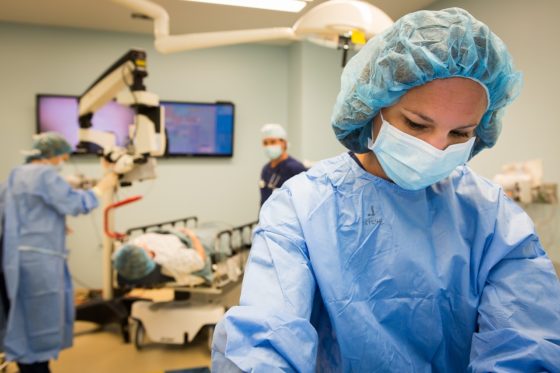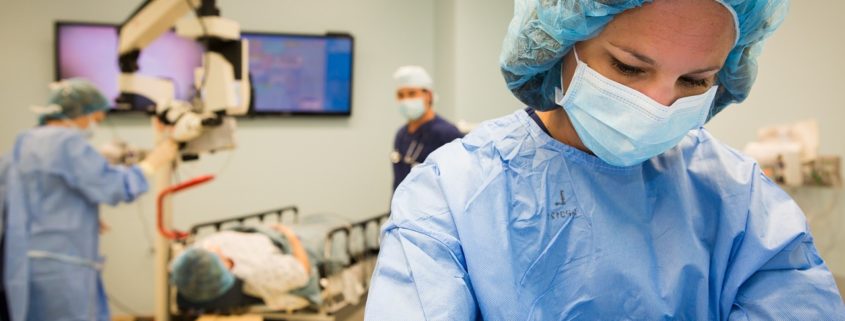Surgery and Cerebral Palsy: What You Need to Know

Cerebral palsy (CP) is the most common source of physical disability in children. It’s a constellation of disorders stemming from injury to the brain prenatally, during birth, or in the early months of life that affects movement, balance, and posture (among other disabilities). According to the March of Dimes, about 1 in 300 children has CP and most are diagnosed before age 2. Once a diagnosis is made, interventions such as speech, occupational, and physical therapy; medications; and possibly assistive devices may be started. As your child grows, another option may include surgery.
This post will discuss the specific surgery types for cerebral palsy, how much surgery may cost, and how to get help with your child’s cerebral palsy.
Contents
Why might my child need surgery?
With CP, every person’s experience is unique, so there is no standard treatment or surgical regimen. Your child’s doctor will assess growth and development, and will make recommendations based on your child’s individual needs, whether he or she has ataxic, spastic, or dyskinetic cerebral palsy.
Surgery might be considered to:
- Control pain
- Improve mobility
- Alleviate muscle tightness or spasms
- Correct uneven growth, spinal curvature, or limb positioning
Doctors don’t agree about the right age for surgery. Some types of surgery are best at the earliest possible time (such as surgery to correct amblyopia). Other types of surgery need to wait for certain physical developmental milestones to take place. And sometimes surgery needs to be repeated as your child’s body grows and changes.
Many healthcare providers will suggest surgery as a last resort, using less invasive options to improve quality of life first and reserving surgery if those do not work.
See also: Can Obesity Before Pregnancy Cause Cerebral Palsy?
Cerebral Palsy Surgery Options
The type of surgery that may be required for your child will depend on which of his bodily systems are most affected by CP. Because of the variety of different systems that may benefit from surgical intervention, your child’s doctor may recommend “single-event multilevel surgery” (SEMLS). This just means that multiple procedures are done during one surgical procedure, possibly involving coordination between multiple specialties, as well as postponing certain treatments until your child reaches milestones for other surgeries.
Orthopedic Surgery
The most common surgical interventions associated with CP are done to change bone alignment or muscle tension, or a combination of bone, muscle, and tendon surgeries to improve mobility and decrease pain during movement. Surgeons may realign bones, or may lengthen muscles or tendons, to improve gait.
If scoliosis (spine curvature) becomes pronounced, bone fusion or other surgeries to align vertebrae may be suggested to improve posture. Surgeries are dependent on your child’s age, and may need to be repeated to account for growth as your child gets older.
Other interventions that go along with these surgeries include the use of serial casting or braces to improve bone alignment, and assistive devices to aid in ambulation.
Gastroenterological Surgery
Because children with CP may have difficulty with feeding (especially chewing and swallowing), placement of a feeding tube may be recommended. This may be a temporary intervention along with other therapies so your child can be provided with a liquid diet bypassing the mouth and esophagus.
Some babies and children have problems with reflux, digestion and elimination, and additional surgeries may be recommended based on the type and severity of the constellation of symptoms.
Neurological Surgery
Selective dorsal rhizotomy (SDR) is a surgical procedure where overactive nerves in the base of the spine are severed to decrease muscle response, making movement easier and alleviating chronic pain. SDR may also be used in cases of overactive bladder. This surgery can treat problems in the arms or the legs, but does have side effects, including loss of sensation.
Vision Surgery
Vision is important not only in daily functioning, but also in communication and learning. Because of the global muscle deficits associated with CP, vision is affected in several ways — blurred vision, changes in the visual field, light sensitivity, visual fatigue, and poor eye muscle control. Treatment for these vision issues typically consists of corrective lenses, but may include surgery.
In cases of strabismus (crossed eyes) or amblyopia (lazy eye), an ophthalmologist may surgically correct the muscle tension on the eye to improve visual acuity. Laser corrective surgery is also an option for some patients. Researchers are also investigating new treatments, such as lens implantation, to help children with CP see — and thus, learn and function — better.
Hearing Surgery
A subgroup of CP patients experience hearing loss. Sometimes this is due to a structural malformation of the inner ear, but may also stem from persistent inflammation. Some children with mild hearing loss may have tubes placed in their ears to improve drainage. If hearing loss is more pronounced, a hearing aid or a cochlear implant may be needed.
When oral medications are ineffective or not practical, a pump may be implanted to deliver medication that dampens the nerve response in the spinal cord and alleviates the muscle spasms associated with CP. Called intrathecal baclofen therapy, this intervention is best for more severe or widespread cases of muscle stiffness or spasticity.
What are the outcomes of surgery for cerebral palsy? How much will it cost?
Researchers continue to investigate surgical outcomes to improve patient care. Outcomes depend on the type of surgery and the child’s symptoms before surgery.
Improved mobility and quality of life is the ultimate goal, and continued physical and occupational therapy may be needed even after surgery has been completed. Following the recommendations for follow-up care interventions will optimize the improvements your child will reap from the surgery.
The cost of surgery will depend on many factors, including your insurance coverage, the type of surgery, and the severity of your child’s disorders. According to the Centers for Disease Control and Prevention, the average lifetime per-person cost of cerebral palsy was $921,000 about a decade ago. Surgery is only one of the factors in this calculation, but the financial costs may pale in comparison to the quality-of-life benefits.
Get Help with Your Child’s Cerebral Palsy
Since there is no cure for cerebral palsy, interventions to improve quality of life are key. The information can seem overwhelming at times. Weighing the pros and cons of surgery and making a fully informed decision can help you feel a little more in control of your child’s healthcare.
While cerebral palsy can have a variety of causes, some unknown, it is possible that your child’s CP was caused by a birth injury. If so, you may be entitled to compensation for your family’s medical costs — both now, and years down the road, as cerebral palsy is for life.
Contact Safe Birth Project today for more information on how we may be able to help.
See also:








Leave a Reply
Want to join the discussion?Feel free to contribute!